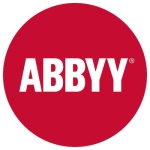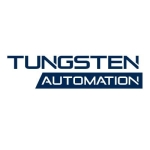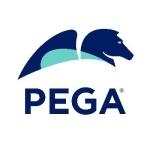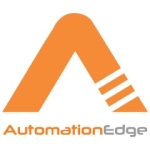What is our primary use case?
The primary use case is hard to say. We have used it in a number of different areas in our company. We've used it for HR, IT, and our business partners on the front lines using the application. Therefore, our primary use case is hard to say, but basically what we try to do is automate the drudgery out of our business partners' lives.
We have automated some of our HR applications, where there are certain courses. Because we're in a financial industry, we have to maintain certain certifications, etc. Some of that is automated where we help generate reports back to HR. In some cases, there are some very front-end, which are CSRs. We have processes automated for them so they have a less manual work effort.
We have worked with our compliance area. Some of the things that we have automated there, because we are a financial industry, are political contributions where we have to be very careful. There are a pay-to-play laws in the US, so we've actually automated, which were very difficult because you had to go to all 50 states to download all the information. Trying to do it manually was probably over 8000 hours a year, and now, we're doing it with automation.
How has it helped my organization?
What is important to us is continues improvement and learning. We want everyone to be able to look at what they do with a critical eye towards how can improve and get things better? By introducing the solution and working closely with our business partners every time, we create a bot, then their mindset shifts.
Now, they are looking at everything else they do, and saying, "Hey, wait a minute. Maybe I can do this in a different way." Whether it's using a bot, some other solution, or sometimes even just improving the process as it is without automation, the company in different parts of organization is really starting to adopt the idea of continuous learning.
What is most valuable?
Probably ease of use has been its most valuable feature. It's been very easy for us to use. We like to operate in a sort of a federated model. So, when we originally started, it was just our vendor partners who were doing the development. Now, we have our own set of core developers at my company. Since 2017, we now have about 23 different people, most of whom are certified developers, a lot of them didn't have a developer background when we started.
What needs improvement?
With the user interface, a lot of the parts of it I really like, but there are some things that could be made a little simpler. A little less clicking around here and dragging over there to use.
My impressions of the Bot Store are I really love the idea of it. We've actually downloaded a couple of them and used them. One of the more recent ones was interesting. It required a license key, which kind of confused us. If it's freeware, why do you need a license key? But we got around it.
What has also been nice, with the most recent bot from the Bot Store that we downloaded, it was developed by a vendor partner who we are partners with as well. So, when we had some issues with it, we were just put in contact with the developer at that same firm, then we were able to work through any issues. Subsequently, they have made updates to it and uploaded it back to the Bot Store, so it's actually great.
For how long have I used the solution?
We did our pilot, which ended in the first or second quarter of 2017, so we have been using it right around two years.
What do I think about the stability of the solution?
The stability is pretty good. In all fairness, I know we went from version 10.5, where we thought we were fairly stable, and we did have some issues. Then, we migrated to version 11.2 and encountered some other stability issues around scheduling things. But, after talking with some Automation Anywhere techs who were extremely helpful, we have recently, as of last week, upgraded to version 11.3.2.1, and that seems to have solved some of our problems.
We are still testing it. I still need to do some checkups. Obviously, I'm here this week, so I'm not doing it right now. Generally speaking, it is stable. Knowing what it's trying to do, I think 100 percent stability with everybody will be different. Architecture and environment are going to be pretty difficult, but they do a good job.
What do I think about the scalability of the solution?
The scalability is easy. Installing license keys, bringing up new Bot Runners, and all that stuff from the Automation Anywhere side of it are easy. It's very easy. I've had little-to-no difficulty doing any of that. I have to go through the paperwork of hardware, VDIs, etc, and that's all on our side. But, from an Automation Anywhere standpoint, it's been very quick and easy to scale.
How are customer service and technical support?
The technical support, from my experience, has been very good. Granted, sometimes there has been a little slowness, but if I deemed it critical, or whatever, then I've had conversations with our customer service manager, or anyone, and they've been able to get me with somebody in architect, which has been phenomenal.
When we did the upgrade to version 11.2, it was sort of complicated, because we had to start all over. We had to bring in new hardware and a new set of new databases, but the gentleman who helped me out was great. He fully documented the process for us, which was awesome, because I didn't have that from the original installs of version 10.5. Because he documented it, I was able to go through the upgrade from versions 11.2 to 11.3 very simply and fast. I would say the technical support is very good.
Which solution did I use previously and why did I switch?
Why did we want to invest in an RPA solution? This was our first solution, so we weren't with someone else first. We did do some evaluation, looking at how and what we wanted to do with bots. Did we want to just use it purely on the back-end? Did we want to use it on the front-end?
Some of the leaders at the time in the strategy and innovation team at our company just saw the need for it. We knew there was a lot of manual redundant processes that were just right for automation, so we said, "Hey, let's bring it on." The PoC sort of proved the concept, then we just brought it in-house and kept going from there.
How was the initial setup?
The initial setup was somewhere right in the middle. It wasn't super simple. We could've probably done things a little better than we did, but it also wasn't horribly complex.
What about the implementation team?
We used an integrator and reseller for the deployment, originally. We worked with HCL Technologies, but we found some gaps in our knowledge because of this. We didn't fully understand the architecture and how it was built.
During all the process of the installs, we didn't get all the documentation. This made some things a little difficult for us, especially when we ended up parting ways with HCL.
Then, we signed with a different vendor for both development and reselling, OPTIMIX. So, going through with the Automation Anywhere architects and getting it installed was great.
What was our ROI?
One of the first steps that we do before automating anything is we determine if it is a process where there is enough ROI involved to dedicate development resources or a bot to? Sometimes, in all honesty, the use case is we want to learn something, so we do it anyway. But, generally, we do a time and motion study, so we understand how much time we are saving somebody. We measure that. Additionally, we measure cost. That varies depending on the department that we're doing the automation for. But, we can measure that, and usually that is a straight hourly rate times the time saved.
Cost avoidance is something that we do, too. In other words, there was a process that we automated where a department was considering hiring someone just to do some file transfers and copies, etc. We automated that process, and they just didn't have to hire somebody.
It definitely saves us a lot of time and money.
What's my experience with pricing, setup cost, and licensing?
It looks like it will be right around $115,000, not counting IQ Bot, which we won't renew until later.
Which other solutions did I evaluate?
We looked at Blue Prism and UiPath, but we felt that Automation Anywhere was a good mix of both the front-end and back-end, whereas UiPath seems very front-end only and Blue Prism is very back end only. We needed a mix for what we wanted to do.
What other advice do I have?
We don't use it as attended as much. We have had a few cases where we were going to use attended, then just decided that for the rarity of those types of uses that we didn't want to have a Bot Runner just sitting and waiting for someone to chime in five times a day. Instead, we've created more scheduled. Right now, all of our bots are running unattended.
It's really easy to use. Again, going back to something that I mentioned earlier, we have a number of people at our firm who are now certified RPA developers that had no development background. They did that just by the online training in some cases. In some cases, it was the online training, as well as a three day class that we brought in-house and had taught. However, the only part where you want to get experience and learning are around error handling.
I've been in software for a long time. I've never seen a perfect piece of software, yet. I've seen some that are very good. With everything this is trying to do and the complexities of the environment, I'm going to give it an eight (out of ten) because it's very good. I think me giving something an eight is pretty high in this space.
Disclosure: PeerSpot contacted the reviewer to collect the review and to validate authenticity. The reviewer was referred by the vendor, but the review is not subject to editing or approval by the vendor.


















